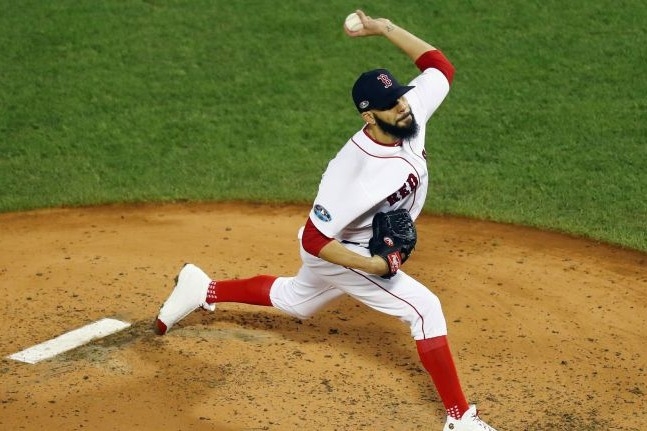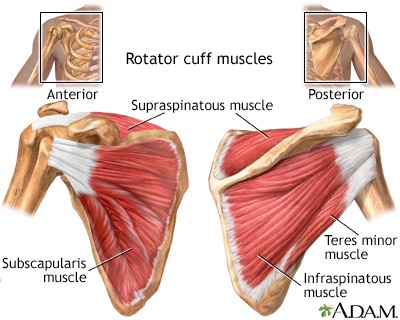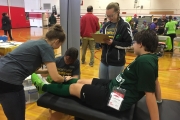THE MYSTERIOUS ROTATOR CUFF

The Rotator Cuff
Occasionally mispronounced as the “rotator cup”, “that rotating thing,” and/or the “rotary cuff.” You’ve probably heard your co-worker, family member, and/or neighbor talking about this daunting part of the shoulder. Often times, when someone injures his/her shoulder, friends and family respond with, “uh-oh, better hope it’s not the rotator cuff.” But what exactly is it? And why is injuring it so scary? We’re taking the time this month to delve into this notorious body part to hopefully answer your questions and deepen your understanding.
Question #1:Ok, so what is it?
The rotator cuff is not actually ONE body part. It’s a collection of muscles that work together to help your shoulder to move. These muscles are the supraspinatus, infraspinatus, teres minor, and subscapularis. Collectively, we call them the rotator cuff.
Question #2: What does it do?
The rotator cuff – you guessed it – allows the shoulder to rotate. But it does much more than that! To understand the role of the rotator cuff, you first need to understand a bit more about the shoulder and how it works. Each joint in the body is generally labeled as a “stable” joint or a “mobile" joint - our bodies require both to function! The shoulder is a mobile joint. This means it’s not secured as tightly to our bodies by supportive bones and big, thick muscles as other stable joints are (for example, the hip). Therefore, the shoulder relies on many different muscles to help support it and to help it move. As opposed to the knee, which mainly just bends and straightens, the shoulder flexes, extends, abducts, adducts, internally rotates, externally rotates, horizontally abducts, and horizontally adducts! It has a very intricate design and requires A LOT of cooperation from all muscles to move it every which way. For instance, the shoulder uses more than four muscles just to lift your arm straight out in front of you. Need to reach behind you to grab your seatbelt? More than six muscles work together to do that. Need to throw a baseball at over 90 miles per hour? Perhaps now you can appreciate the sophistication and complexity of the shoulder joint to make these things happen.
Like we said earlier, the rotator cuff does not just rotate the shoulder - it’s an intricate part of a bigger machine.
This machine, the shoulder, has a main joint that acts like a ball and socket. The end of your upper arm bone (humerus) is the ball as it is round in shape. It comes up and fits into the socket of your shoulder. Your rotator cuff muscles then come from your shoulder blade and attach around this ball and socket joint. As soon as you lift your arm from your side and past 60 degrees, your rotator cuff muscles help to keep the ball in its socket. So the rotator cuff muscles also help with lifting, reaching, and keeping your shoulder safe and stable.
Question #3: What’s the big deal about injuring it?
Well, if you’re the guy above – injuring your rotator cuff means putting a 30 million dollar contract in jeopardy. But for those of us who don’t throw a baseball for a living, you can hopefully now understand that losing your rotator cuff means more than losing the ability to rotate your shoulder. Your rotator cuff muscles help to chip in with other muscles to lift, twist, and stabilize. Whether it’s lifting a slow cooker from the top shelf in the kitchen or slipping into a new winter coat, you need your rotator cuff to make it happen.



